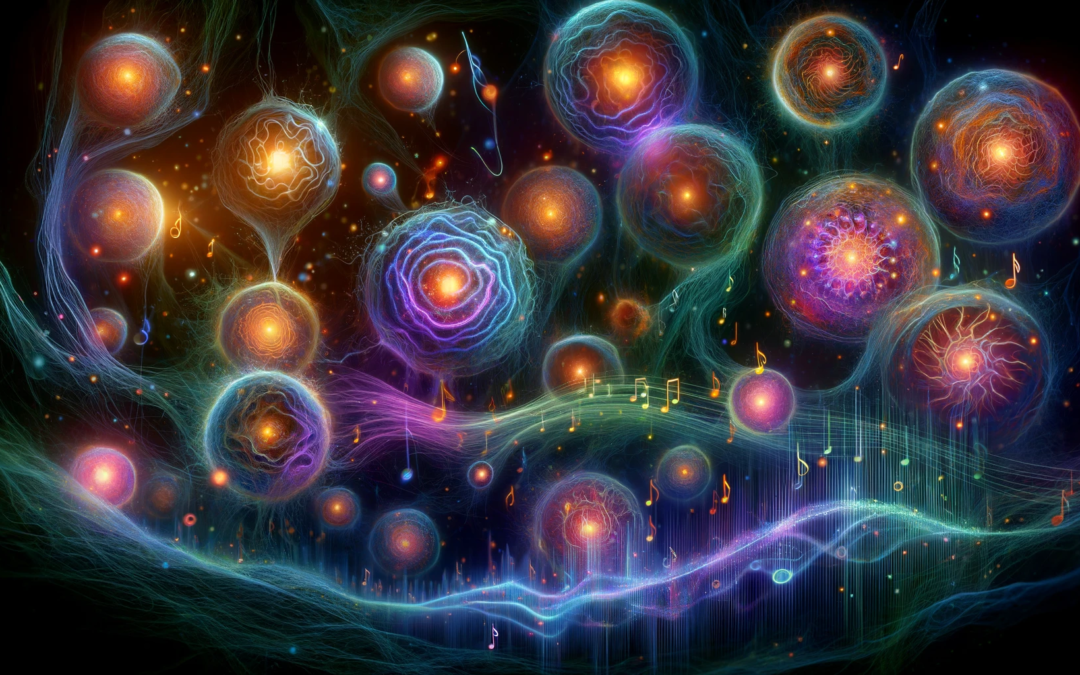In the intricate dance of life, every element moves to a subtle, yet profoundly intricate rhythm. Recently, scientists have made a fascinating discovery: human cells vibrate with a resonant frequency that is, in a technical sense, audible. This revelation not only deepens our understanding of the biological orchestra within us but also opens new avenues in the field of medical diagnosis and treatment, particularly in the realm of AI’s role in healthcare.
The Symphony Inside Us: Understanding Cellular Vibrations
Every cell in the human body is akin to a musical instrument, resonating with life’s melody. These vibrations, although not audible in the conventional sense, can be detected and interpreted using sophisticated equipment. This phenomenon is not just a mere curiosity; it holds profound implications for our understanding of cellular health and function. Cells, like any living entity, exhibit signs of distress or dysfunction. In a healthy state, they resonate at specific frequencies, akin to an orchestra playing in harmony. However, when a cell is in distress, its vibrational frequency changes, much like how a musical instrument out of tune stands out in a symphony. This alteration in frequency can serve as an indicator of disease or malfunction at the cellular level.
AI’s Role in Decoding the Cellular Melody
Enter the realm of AI, a field where machines are not just tools but collaborators in the quest for understanding and healing. AI systems, with their ability to process and analyze vast amounts of data, are perfectly suited to ‘listen’ to these cellular frequencies and interpret their meanings. In practical terms, this means AI can be trained to recognize patterns in cellular vibrations, identifying which frequencies correspond to healthy cells and which signify disease. This capability could revolutionize medical diagnostics, allowing for earlier detection of illnesses at a cellular level, long before they manifest as symptoms.
Potential Applications in Medicine and Beyond
The applications of this discovery are as vast as they are exciting. Imagine a world where a simple scan can reveal the earliest signs of cancer or other diseases, based on the vibrational frequencies of cells. This technology could lead to highly personalized medical treatments, where therapies are tailored not just to the disease but to the individual cellular makeup of each patient. Moreover, this understanding of cellular vibrations could extend beyond human medicine. It could be applied in fields like agriculture, where the health of plants could be monitored and managed through AI analysis of cellular vibrations. The potential for such technology in improving food security and crop yields is immense.
Ethical Considerations and Challenges
As with any advancement in science and technology, this development comes with its own set of ethical considerations and challenges. The prospect of AI systems delving deep into the cellular makeup of individuals raises questions about privacy and data security. Moreover, the interpretation of these cellular frequencies must be handled with care to avoid misdiagnoses and unnecessary alarm.
Conclusion: A New Frontier in Understanding Life
This discovery of the audible nature of cellular vibrations opens a new frontier in our understanding of life at its most fundamental level. It’s a testament to the marvels of both the human body and the technology we’ve developed to understand it. As we continue to explore this fascinating intersection of biology and AI, we stand on the brink of a new era in medicine and beyond, one where the smallest vibrations can lead to the greatest discoveries.










